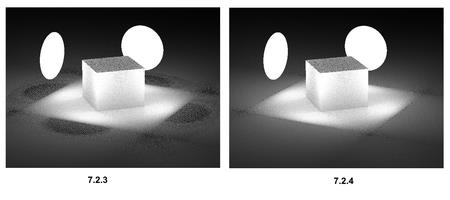
Free Download Solid Angle Cinema 4D to Arnold 4.6.6 | 6.7 Gb
Owner:Solid Angle
Product Name:Cinema4D to Arnold (C4DtoA)
Version:4.6.6
Supported Architectures:x64
Website Home Page :www.arnoldrenderer.com
Languages Supported:english
System Requirements:Windows, macOs & Linux *
Size:6.7 Gb
The Solid Angle Team, a bussines Autodesk, is pleased to announce the availability ofArnold (C4DtoA) 4.6.6 for Cinema4D. This release uses Arnold 7.2.4.0 and is a minor feature release.
Enhancements
-Toon shader - improved detection of internal edges:The toon shader now does a better job of detecting angle threshold silhouettes that are internal to a single object. This is most apparent in the regions between nearly parallel surfaces of an object that are at different distances to the camera. (ARNOLD-10560)

-Improved mesh-lights sampling and update:Improved time to first pixel (up to 10% for scenes containing many large meshes) and overall render time (up to 5% for scenes with multiple flat mesh lights). (ARNOLD-13639)
-Improved interactive performance:Multiple optimizations to make interactive renders snappier by improving the interruption rate when modifying the scene. (ARNOLD-9833, ARNOLD-14077, ARNOLD-14083)
-Improved Global Light Sampling behavior around flat lights:Reduced noise with Global Light Sampling for surfaces near or behind flat lights (disk or quad lights). (ARNOLD-13192)

-Use dependency graph automatically for interactive renders:For interactive renders (IPR), the dependency graph is always enabled, regardless of the value of options.enable_dependency_graph. Interactive rendering updates for scene changes are improved by (and in some cases require) the dependency graph, so enforcing this setting avoids potential crashes. (ARNOLD-10732)
-Added support for alpha channel output in PNG driver:Added new boolean parameters skip_alpha and unpremult_alpha to the driver_png node. They behave in the same way as in the TIFF driver, with skip_alpha ignoring the alpha channel, and unpremult_alpha selecting either unassociated alpha (on) or associated alpha (off). Please note that PNG files with associated alpha are not supported by the PNG standard. (ARNOLD-10540)
-OpenColorIO Alias supportThe OCIO color manager now supports the use of OCIO color space aliases. (ARNOLD-13998)
USD Enhancements
-Custom MaterialX node definitionsMaterialX node definitions placed under a folder defined by the environment variable PXR_MTLX_STDLIB_SEARCH_PATHS are now supported when rendered with Arnold, through USD or Hydra usd#1632. There is no longer any restriction on the node definitions prefix and naming convention usd#1603.
-ArnoldProceduralCustom support in Hydra Primitives ArnoldProceduralCustom are now supported inside of Hydra, and allow to render 3rd party Arnold procedural nodes usd#739.
API Additions
-AiMaterialxGetNodeEntryFromDefinition:Given a MaterialX node definition, returns the corresponding Arnold node entry. Arnold searches for node definitions in the materialx directory in the Arnold distribution and in any directory listed in the ARNOLD_MATERIALX_NODE_DEFINITIONS environment variable. The function returns the relevant Arnold node type if the node has a native Arnold implementation, or the OSL node type if the node has an OSL implementation only, so you can safely call AiMaterialxGetOslShaderCode with the same node definition. (ARNOLD-13957)
Incompatible Changes
-AiUniverseGetOptions() no longer returns "sanitized" threads count:AiUniverseGetOptions() returns the options set by the user, while AiRenderSessionGetOptions() returns the options actually used by the render. Previously this behavior was not followed for options.threads, and both the universe and render session's options contained a "sanitized" version of the thread count. For example, a thread count of 0 was interpreted as "autodetect" and sanitized to be the number of logical cores. Now, querying the universe options.threads can return 0 or other values that do not reflect what is being used. If the sanitized version is needed, replace AiUniverseGetOptions(universe) with AiRenderSessionGetOptions(AiUniverseGetRenderSession(universe)). (ARNOLD-14083)
Bug Fixes
ARNOLD-12005 - Hang when toggling denoiser ('N' key) in kick
ARNOLD-12205 - [GPU] Rare crash when process is terminating
ARNOLD-13709 - Invalid render when new OSL shaders are created interactively
ARNOLD-13823 - Correct scene scale conversion for nested procedurals
ARNOLD-13983 - Crash in IPR when enabling the OptiX denoiser, light mixer, or Arnold denoiser imagers
ARNOLD-13995 - Incorrect motion range in the instancer
ARNOLD-14065 - Artifacts with thick curves when scaling is applied
ARNOLD-14067 - Arnold MaterialX node definitions do not expose multiple outputs
ARNOLD-14074 - shidx not being gathered for alembic.material_attrbute string attribute
ARNOLD-14099 - Wrong separator used in the materialx paths
usd#1693 - Fix regression with Geometry lights in Hydra
usd#1696 - Fix regression with Cryptomatte in Hydra
usd#1613 - Invisible Hydra primitives should ignore arnold visibility
usd#1641 - Ensure nodes created by the render delegate have the correct parent procedural
usd#1673 - UsdUvTexture ignores missing textures in hydra
usd#1675 - Fix UsdUvTexture default wrap modes and uvset coordinates.
usd#1657 - Fix a motion blur sampling bug happening when a mesh has facevarying indexed normals and different number of indices per key frame
usd#1634 - Support curves orientations identically between USD and Hydra / Prevent errors due to bad curves orientations count
Arnoldis an advanced cross-platform rendering library, or API, developed by Solid Angle and used by a number of prominent organizations in film, television and animation, including Sony Pictures Imageworks. It was developed as a photo-realistic, physically-based ray tracing alternative to traditional scanline based rendering software for CG animation. Arnold uses cutting-edge algorithms that make the most effective use of your computer's hardware resources: memory, disk space, multiple processor cores, and SIMD/SSE units. The Arnold architecture was designed to easily adapt to existing pipelines. It is built on top of a pluggable node system; users can extend and customize the system by writing new shaders, cameras, filters and output driver nodes, as well as procedural geometry, custom ray types and user-defined geometric data. The primary goal of the Arnold architecture is to provide a complete solution as a primary renderer for animation and visual effects.
Arnold for Cinema4D (C4DtoA)supports most Cinema 4D features such as instances, cloners, deformers, generators, MoGraph geometry, hair, and ThinkingParticles. It also supports both animation and single frame distributed rendering in Team Render, allowing the use of all computers in a local network to speed-up Arnold rendering. Third-party plugins TurbulenceFD and X-Particles are natively supported, allowing artists to render high quality smoke, fire, and particle effects with fully interactive feedback. Other features include volume rendering with OpenVDB, a node-based material editor and a comprehensive list of shaders and utilities, including vertex maps and per-face materials.
The Ultimate Introduction to Arnold 6 (& 7) For Cinema 4d
Solid Angle SLis the technology company behind the Arnold rendering software, with offices in Madrid and London and customers throughout the world including Framestore, DreamWorks, ILM, Sony Pictures Imageworks, MPC, The Mill, Mikros Image and Rising Sun Pictures. Arnold was designed from the ground up to efficiently raytrace the complex geometric datasets required for feature-length CGI animation and big budget visual effects, while at the same time simplifying the pipeline, reducing the number of passes, minimizing storage requirements and greatly enhancing interactivity for lighting artists.
Rapidgator-->Click Link PeepLink Below Here Contains Rapidgator
http://peeplink.in/92619d13e43f
NitroFlare
xapzf.setup.part1.rar
xapzf.setup.part2.rar
Fikper
xapzf.setup.part1.rar.html
xapzf.setup.part2.rar.html
